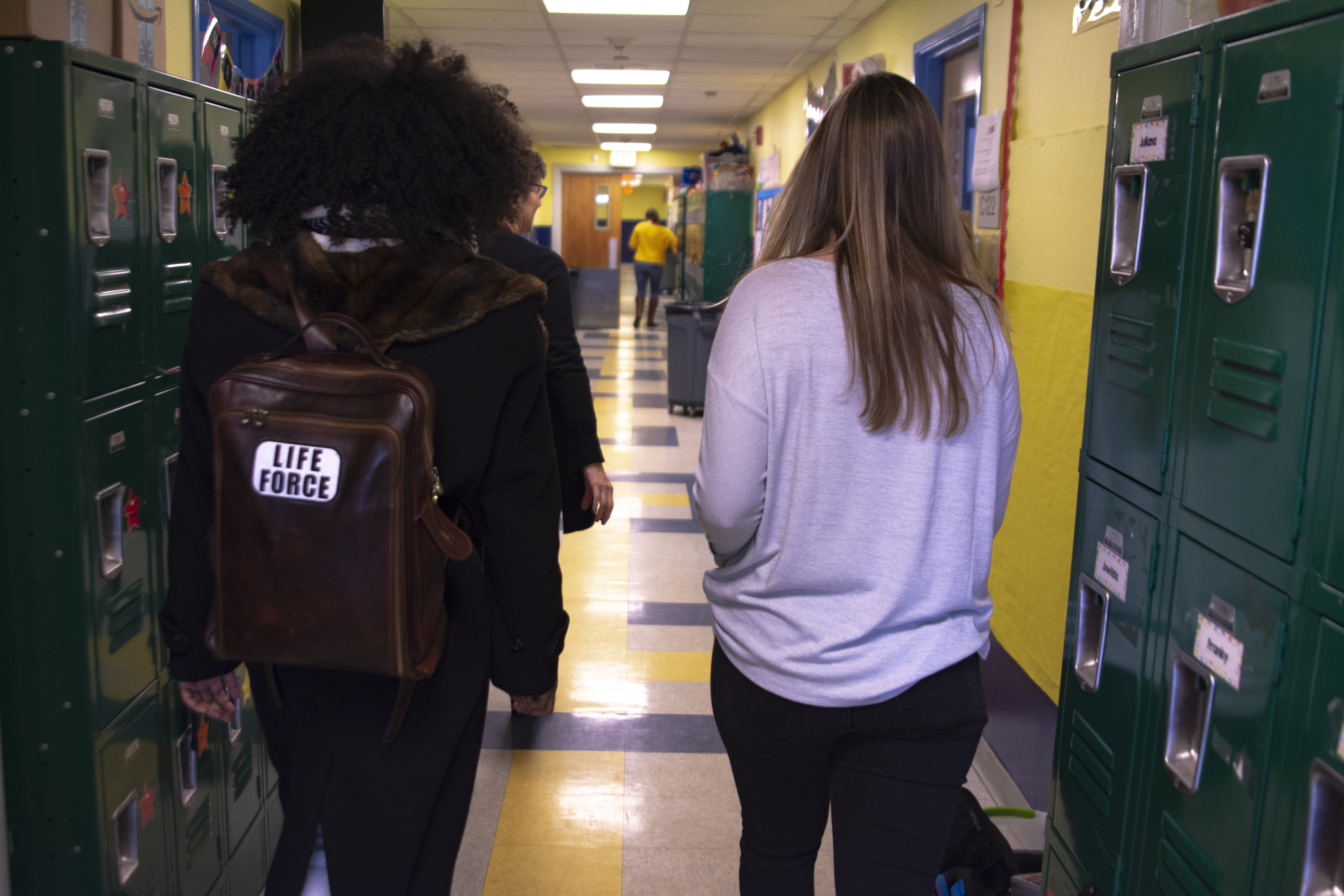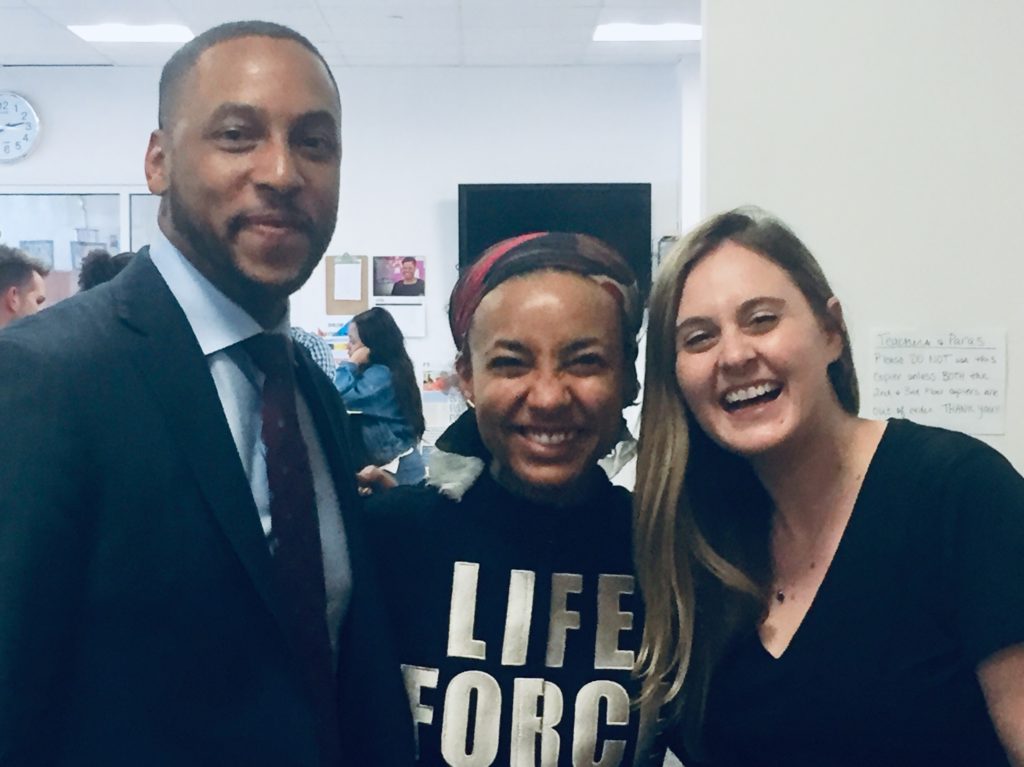Tess (right) with Eric Bethel, former principal of Turner Elementary, and Esperanza Spalding
This year, Conservatory Lab was proud to promote Tess Plotkin to Director of El Sistema. In that role, she oversees the artistic and academic excellence of our music program. We sat down to catch up with Tess on a quiet day in between flying home from Rome and ramping up for the school year:
1) You just finished your Master’s degree. What’s the most satisfying aspect of that achievement?
The most satisfying aspect has been recognizing how much professional growth I have made during my eight years at Conservatory Lab. When I started teaching in 2012, I had recently graduated and was uncertain which professional path I wanted to take. I have learned so much from being a part of this community, and while finishing my master’s has been a milestone, I am eager to keep learning and growing.
2) How did you first come to Conservatory Lab?
I first came to Conservatory Lab by chance. My college roommate was doing her student teaching in a second-grade classroom and she would come home talking about this incredible school where every student played music each day. That concept would have been my dream as a student. I began volunteering in whatever capacity I could. I attended a spring concert right before I graduated. I felt so moved watching the students perform with such ownership and feeling, and I was in awe of the Resident Artists who were supporting them. It was at that moment that I knew I wanted to work on that team.
3) What the heck is a cajón? Why do so many teachers have them?
A cajón is a Peruvian drum that you sit on to play. You can create different tones depending on where and how you strike it. I began bringing a cajón to my percussion and early childhood classes back in 2012. At first, I used it just to accompany my students when they were singing and playing, and I would teach students to do the same. After I realized how much students enjoyed playing the cajón, I decided it was the perfect teaching tool and a magical incentive for student participation and leadership. It also occured to me that it could be used to support learning inside academic classrooms. As an instructional tool, teachers and students can keep a beat to practice fluent counting, reading, and finding the rhythm of a poem. A cajón is a powerful tool for positive behavior management. Students can take “brain breaks” where they jam and create beats and get refocused. Teachers can play “my turn, your turn” rhythms to capture students’ attention and keep them actively engaged during transitions and routines. Since all students at the lower school had learned to love and play cajóns in their music classes, classroom teachers were eager to use them too. Now all classrooms at the lower school have their own cajóns and it’s not unusual to hear students and teachers using them in endlessly creative ways.
4) What music are you listening to at home?
I recently inherited my parents’ record collection. When I found them in boxes in their basement, I felt like I had discovered treasure. Between the two of them, my parents’ musical interests span so many genres. I brought boxes of records back to my apartment in Boston and have been enjoying the musical journey. Everything from Stevie Wonder to Weather Report to Fleetwood Mac. There is something so special about taking a record out and holding that tangible music and history in your hands. We never owned a record player while I was growing up, so I find it magical that these records are producing sound for the first time in at least 30 years.
5) Have any wild stories of meeting celebrities in LA?
Funny you should ask. Last spring when I was visiting my brother in LA, Esperanza Spalding invited me to watch a workshop of the opera she and Wayne Shorter are writing together. If that wasn’t special enough, the workshop was at Joni Mitchell’s house and my seat was next to Herbie Hancock. April Vacation was surreal, to say the least.

